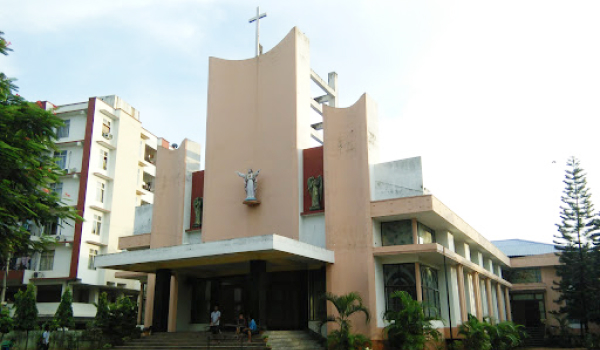
In a land area of 17, 551 square kilometers, the diocesan territory covers civil districts of Kamrup, Goalpara, Nalbari, Nagaon, Morigaon and Baksa in the state of Assam.
Guwahati is the biggest city in the diocese. Dispur and Nagaon are other important towns in the territory.
7,619,000 is the total population in the diocesan territory at the end of 2016. (The population of the whole country is about 20 million).The Assamese are the majority community in the archdiocese, however, it is also home to many tribal groups like Garo, Rabha, Bodo, Karbi, Tiwa, Santal and Adivasis.
Assamese, Bodo, Rabha, Garo, Karbi, Tiwa, Hindi, Santali, Sadri, Oraon, and English are the languages used in the archdiocesan territory.
Guwahati, the ‘gateway' to North East India, is the first place to be associated with Christianity in the region. Two Portuguese Jesuit Missionaries, Cabral and Cacella — the first Christian Missionaries to set foot in Assam — reached Hajo and Guwahati on Sept. 26, 1626. They were on their way to Tibet from Hooghly.
In June 1850, Father Robin, Father Krick and Father Bernardi of the Institute of the Foreign Missions of Paris reached Guwahati. Father Robin tried to learn Assamese and to establish a centre at Bongnia. Father Krick proceeded to Nagaon and from there to Dibrugarh with the intention of going to Tibet. In 1854, Father Krick and Father Bourry were killed in the Mishmi Hills while trying to enter Tibet.
Father Jacopo Broy of the Institute of the Foreign Missions of Milan took up residence in Guwahati and built a brick church here in 1883. From this central place he looked after the entire ‘Assam Missions'. Soon we find him in Nagaon where he later built a small church.
In 1889, the prefecture apostolic of Assam was created with headquarters at Shillong and was entrusted to the German Salvatorian Fathers. In February 1890 the German Salvatorian Missionaries Fathers Gallus Schrole and Rudolph Fontaine reached Guwahati. They were the two great missionaries of the Assam Valley. By this time many tribal Catholics from Chota Nagpur had come to work in the tea gardens of Assam.
With the outbreak of World War I, the German Salvatorian Fathers were forced to return to their country. The Jesuits of Calcutta looked after the Assam mission till the Holy See entrusted it to the Salesians of Don Bosco in 1921.
In 1922, the Salesians of Don Bosco arrived in Northeast India under the leadership of Father Louis Mathias.
The city is managed by Corporation. The villages and small towns are administered by elected local bodies called panchayats and municipalities respectively.
The diocesan territory is well-connected in terms of transport infrastructure by roads and railway. The nearest airport is in Guwahati city.
Nearly Rs 22,081 ($479) is the per capita income in the diocese as of October 2009. Farming and tea cultivation are major revenue earners.
Tea grown in these areas is world renowned. Agriculture is a major source of income in the diocesan territory. Rice, ginger, coconut, tapioca and rubber are grown here.
Government and private operators provide extensive telecommunication facilities in the diocesan area. The diocese is well-connected by local cable TV networks.
Nearly 63.94 percent is the literacy rate in the archdiocese.